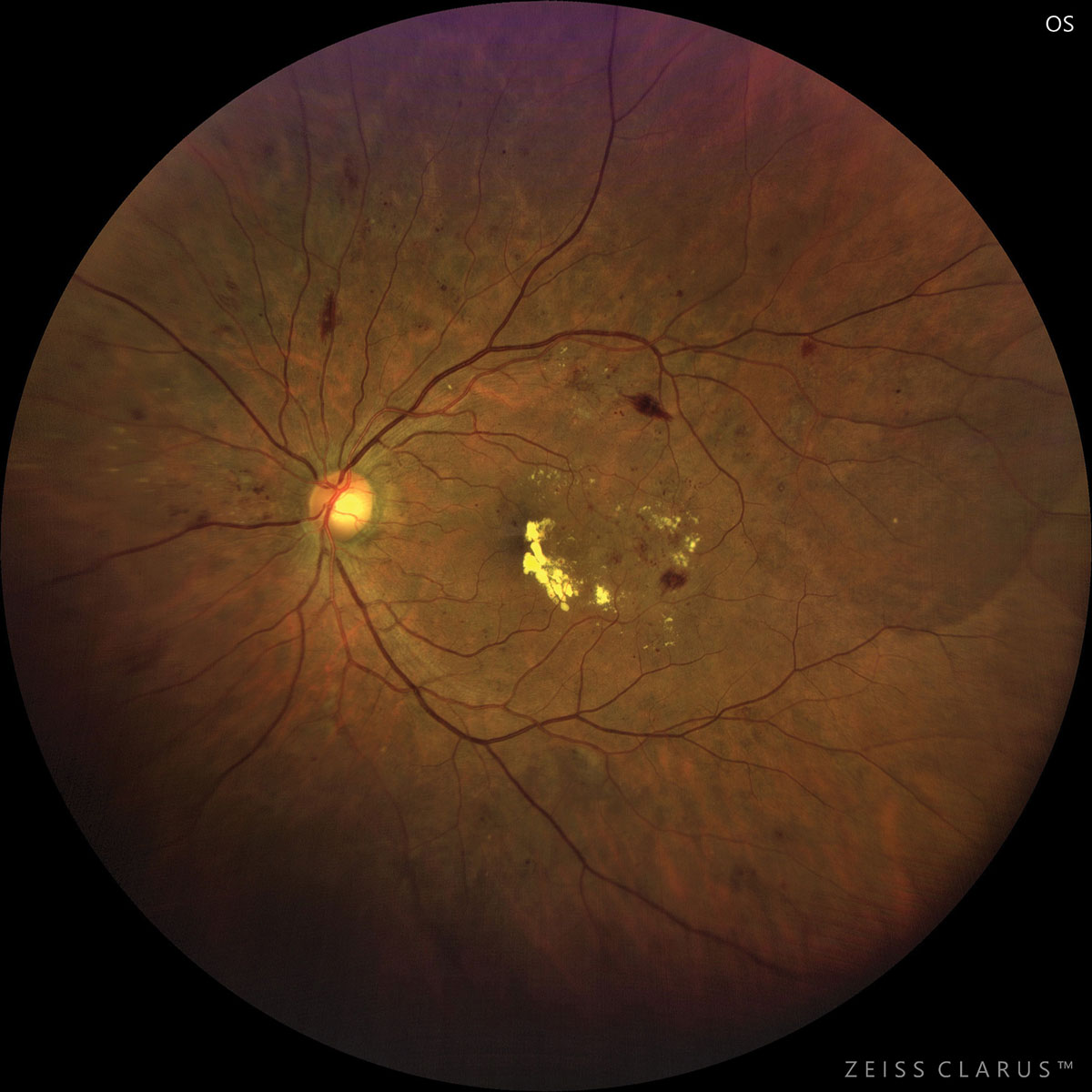 |
| A one-size-fits-all approach to DME isn’t ideal. Experts say that personalized treatment and careful patient monitoring can achieve good outcomes for DME patients. Photo: Jay Haynie, OD. Click image to enlarge. |
Anti-VEGF therapy is the cornerstone of diabetic macular edema (DME) treatment today, supported by numerous randomized controlled trials. As clinicians know, however, real-world patient outcomes often differ greatly from those reported in clinical trials, where patients are selected based on strict inclusion criteria and conditions are carefully controlled and monitored. Observational studies have reported that real-world patients are administering significantly fewer injections than their clinical trial participant counterparts.
To get a better sense of real-world outcomes, researchers analyzed a cohort of treatment-naïve DME eyes in routine clinical practice that received bevacizumab first, with pre-defined switch criteria should the response be suboptimal. They found that this approach resulted in substantial visual gains and fewer injections over time.
The real-world, retrospective study included 644 eyes of 444 patients (mean age 64) followed over three years. A total of 67.1% of eyes received bevacizumab monotherapy. A quarter of patients (25.45%) switched to a second-line agent and 7.45% switched to a third-line agent. The researchers reported that the mean number of injections for the entire cohort significantly decreased in each treatment year, as well as within each treatment group. Visual acuity overall and within each treatment group also improved significantly. There were no significant differences among the three groups.
Based on these findings, the researchers concluded in their Retina paper that “substantial and sustained” visual acuity gains can be achieved for DME patients with bevacizumab monotherapy and transitions to second- and third-line therapies as needed, with fewer injections in the second and third years of treatment.
They wrote that “this study underscores the significance of personalized treatment approaches and vigilant patient monitoring while also emphasizing the necessity for further research on predictive factors and the potential advantages of adjunct therapies, ultimately striving to enhance patient outcomes and alleviate healthcare burdens.”
Zur D, Hod K, Trivizki O, et al. Anti-vascular endothelial growth factor treatment in diabetic macular edema: results from a large single center cohort with bevacizumab as first-line therapy. Retina 2024. [Epub ahead of print]. |


